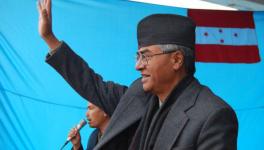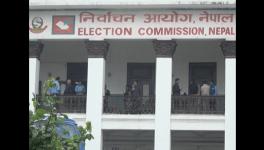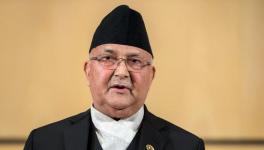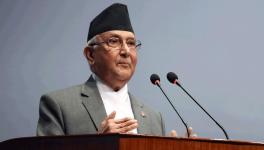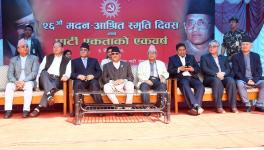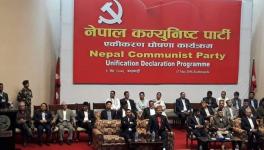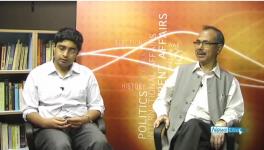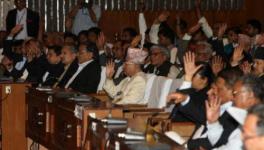Stunning results favouring the Status Quoists
In what has been a surprising result, the second iteration of Constituent Assembly elections held in November 2013 has relegated the United Communist Party of Nepal (Maoist) - UCPN(M) to the third position, much behind the Nepali Congress and the Communist Party of Nepal (Unified Marxist-Leninist) – UML. The Nepali Congress and the UML, which dominated the Nepali polity in the 1990s have collectively – in both the first-past-the-post seats as well as the proportionally represented votes - garnered close to a 2/3rds majority in the second CA. The Maoists and the Madhesi parties, which had done exceedingly well in the 2008 elections were reduced to much inferior positions. Results hosted here point to a stark story for the Maoists while the Nepali Congress and the UML must be elated for they overturn the CA 1 situation, which marginalised these parties substantively.
The Results and the Maoists
The Maoists' poor show has been surprising, because they were the progenitors of the Constituent Assembly process in the first place and had been most vocal for change as the country hurtled from a civil war affected constitutional monarchy into a fully fledged republic in the very first sitting of the CA in 2008. Perhaps this defeat is an outcome of the perception among the Nepal electorate that the Maoists have only gone downhill since then as they were unable to meet the very high expectations of them. The magnitude of defeat has stunned the Maoists, who have cried foul suggesting a conspiracy and rigged elections and have boycotted the election results and counting. While some electoral malpractices cannot be ruled out, it is amply clear that the mandate has decisively been against the Maoists and they should be better off if they came around to that view sooner rather than later.
The first tenure of the CA resulted in the failure to write a Constitution due to two distinct factors – the inability of the parties to govern as part of a national consensus government as the Constitution was being written and the the direct polarisation and division among political parties on the issue of “state restructuring”. The Maoists and Madhesis had been most vocal for the need for federal restructuring, if need be on a semi-ethnic basis, as the Nepali Congress and the UML used every maneuver possible to either delay or derail that eventuality.

Image Courtesy: wikipedia.org
The unfavourable results suggest that either the Maoists and the Madhesis were unable to capitalise on this issue or that the tide in Nepal has turned against ethnically determined federal restructuring. There is a possibility of truth in both as the most likely reason for the Nepali electorate to vote for status quoism had much to do with their perceptions on governance. Periods where the Maoists showed a relentless thirst for power, such as the repeatedly failed nominations filed by the chairman Prachanda to attain prime ministership in 2011 or the decision to nominate the chief justice as the caretaker prime minister (in order to keep the Nepali Congress out) did not reflect well on them.
Many reports in the run up to the elections in Nepal pointed to the ordinary Nepali's privileging of issues related to governance and the local economy. The CA process – mostly restricted to the urban environs of Kathmandu and featuring intense political deliberations between the leaders of the main political parties related to the CA, the peace process and Constitution writing – increasingly saw very little attention provided to basic issues of governance. It is possible that “high politics” - the CA process – was not necessarily appreciated by a frustrated electorate which saw these processes as increasingly divisive, unruly and chaotic and they decided to return the status quoist forces to power due to deep disappointment with the Maoists in particular.
The split among the Maoists did not help matters either. While organisationally, the Maoists were indeed affected by the loss of a substantial section of ideologically motivated cadre, the breakaway party, the Communist Party of Nepal (Maoist) - CPN(Maoist)'s call for an electoral boycott hurt the parent party's electoral standing. There have been reports of CPN(Maoist) cadre participating in elections despite the boycott, and considering the results it is anybody's guess as to whether they sought to punish the parent party for their “reformism” and “parliamentarism” by voting against them. The Nepali Maoists indeed created a perception of being trapped in the traditional politics of power and patronage as some of their leaders were seen to suddenly enjoy luxurious life styles in the capital city in particular.
The Maoists have now signalled that they would be unwilling to participate in a CA process that is skewed toward status quoism and would prefer the Constitution to be written through an all party consultation mechanism – a demand that was first mooted by CPN(Maoist) leader Mohan Baidya “Kiran”. This would also seem odd as the Maoists were keen champions of a popular CA in the first place, even justifying their “peoples' war” as necessary for that purpose. Should not the Maoists use their ability to mobilise people from the grassroots to ensure a proper and progressive Constitution (the initial drafts made by thematic committees in the first CA on most issues were already sufficiently progressive) through public pressure as the CA is in session? Would not the move to discredit the popular nature of the CA and reliance on an all party mechanism be counter-productive?
These are questions that the Maoists must ponder upon, even as they evaluate their political and ideological strategy over the past five years since the beginning of the peace process. The Maoists had largely abandoned some of the alternative institutions and radical measures (land reforms, voluntary labour, small communes etc) that they had evolved during the peoples' war period and had become increasingly “statist” in their approach. This had consequently also resulted in the internal split (also due to other reasons), and the “mainstreaming” did not secure the support of their core voter base. Without having to return to their past insurgent ways, there is certainly enough leeway for the Maoists to pursue their alternative agenda and to push for further democratisation in Nepal.
What holds for the Constitution?
The two parties, the NC and the UML seemed most vociferous in preventing a deal on the “state restructuring” issue. But a closer look at the developments leading to the dissolution of the CA-1 suggests that a resolution on the issue wasn't too far away as was made out to be. The thematic committees and restructuring commission in the CA had more or less finalised a roadmap for federalisation. The lack of an agreement on finalising the constitution had much to do with both politics as also with a last ditch effort by status quoists to prevent a deal.
Keeping this in mind, there is very much the possibility that the status quoists will seek to overturn a number of features of the deliberations in CA-1. The draft constitution being worked had envisaged a number of progressive features – seeking a robust regime of rights and a governance system that sought to combine recognition and redistribution. But these were sought to be done by utilising a state structure that had not necessarily changed from the days monarchy ruled Nepal. With the Nepal Army, police, bureaucracy (and even the judiciary) as intact as it was from those days, the CA's decrees were not necessarily going to reform Nepal substantively.
The deep state therefore has successfully resisted “comprehensive change” in Nepal while the people seem to have tired of the machinations worked by the so called agents of progressive change and have returned the section that was least resistant to the status quoists back to power. Seen in this way, the developments do not augur too well for a resolution.
It depends upon the progressive sections within the Nepali Congress and the UML to push for changes despite massive resistance from both within and without. Sections among these parties had shown vision in pushing for a peace process during the chaotic days of the Emergency and absolute monarchy in the early 2000s. Could they manage to do a similar thing now? Much of that possibility is incumbent upon how the staunchly republican and liberal democratic sections of the Nepali Congress and the pro-change and non-status quoist figures among the UML act.
The writer is senior assistant editor with the Economic and Political Weekly. Large parts of the article are reproduced from an EPW editorial on the subject.
Disclaimer: The views expressed here are the author's personal views, and do not necessarily represent the views of Newsclick
Get the latest reports & analysis with people's perspective on Protests, movements & deep analytical videos, discussions of the current affairs in your Telegram app. Subscribe to NewsClick's Telegram channel & get Real-Time updates on stories, as they get published on our website.










